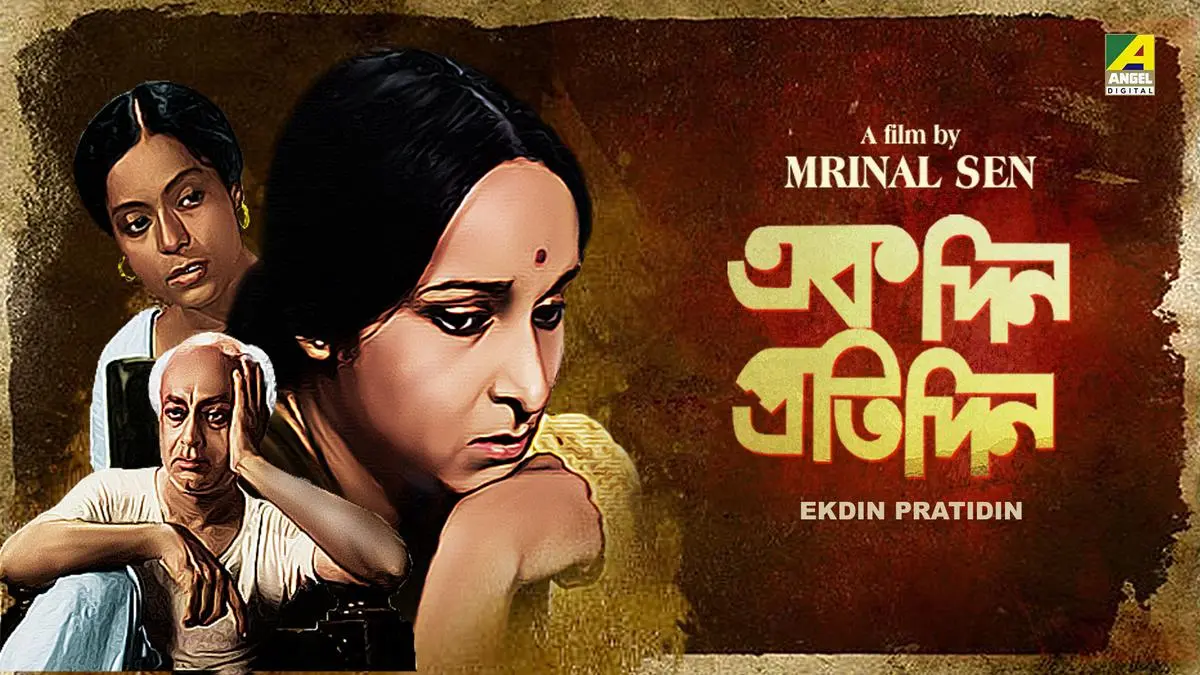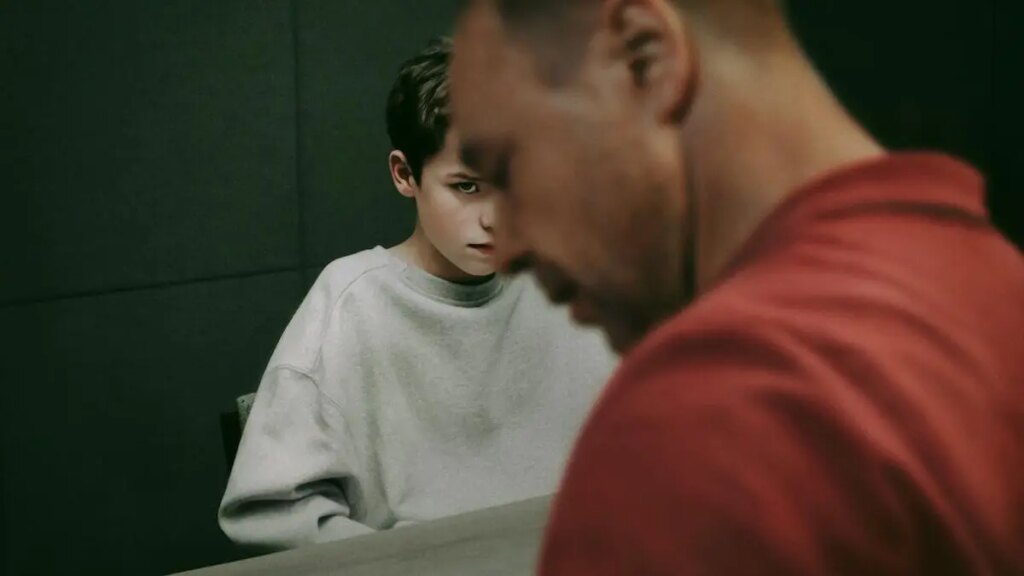It might sound odd, but the more I think about it, the more the current rage on Netflix—the critically acclaimed British crime miniseries, Adolescence—reminds me of the 45-year-old Mrinal Sen gem, Ek Din Pratidin (literally, A Day Like Any Other, with the English title, And Quiet Rolls the Dawn). Despite being made generations apart in time and geo-cultural setting—the latter was shot in Kolkata in 1979, whereas the former is set in 2024 in an English town, and filmed in England—the stories of the two movies are strangely intertwined. At the heart of both is an incident that remains unexplained or ambiguous.
The four-episode Netflix series leaves viewers a little dissatisfied because they do not get the answer to the primary question looming over the thriller: did 13-year-old Jamie Miller kill his classmate, Katie Leonard? Furthermore, audiences get to know precious little about the victim and whether she invited the tragedy, consciously or unconsciously.
Likewise, as the curtains roll down on Sen’s film, with the family matriarch symbolically framed behind barred windows, viewers do not get the answer to the question that haunts them throughout—did the family’s sole breadwinner, a young woman in her 20s named Chinu, deliberately return home late or was she held up by some trouble? What was she doing during the time when her family was frantically looking for her? Pointedly, once she returns, nobody asks after her health, safety, or well-being. She starts explaining but is silenced, lest the answer brings out the family’s guilt over resting in the comfort of home while Chinu toils it out.
Procession of days in Ek Din Pratidin
While the narrative of Adolescence is known to most of us, a small refresher is required on Sen’s film, which won several awards back then. Set emblematically in a crumbling residential building tenanted by numerous families, the film speaks of a life that is barely anything more than the daily grind of living—from bathing in water drawn from a well in the common courtyard to cooking on earthen chulahs, inhaling the deadly smoke every day. It is implied that any given day is no different from others—not just in this particular apartment but in all the decaying houses that would have dotted Calcutta back in the 1970s.
Also Read | From revolution to realism, the multifaceted legacy of Mrinal Sen
The house, with its many tenants, has an ordained routine, an invisible norm, which must be followed. The landlord, who acts as the custodian of morality simply because he has inherited the crumbling edifice, lives by the clock and imposes the routine on everyone.

A poster of Ek Din Pratidin.
| Photo Credit:
By special arrangement
In this fixed setting, all hell breaks loose the evening Chinu does not return home from work at the designated hour. Fear of the incident getting out forces the family to keep mum till the landlord hears the middle sister calling somebody up from a nearby dispensary about Chinu’s whereabouts.
Parental guilt
As in Adolescence, where the parents are shown facing up to their failures, in Ek Din Pratidin too, what is laid bare is the selfishness of the family members, the patriarchal boorishness of the landlord, and the prurient interest, rather than sympathy or concern, of the neighbours. When Chinu eventually returns, everyone comes to their own conclusions about the absent hours. After a night of melodrama and confrontation between the family and landlord, a new dawn breaks, heralded by smoke rising from the earthen stoves. And so, it is implied, life continues unquestioned and unexamined. The brief hours of self-scrutiny occasioned by Chinu’s absence have to be left behind quickly if life is to go on unthreatened.
In Adolescence, we see something similar in the parents’ response. Although it is not spelt out if the family accepts Jamie’s decision (spoilers ahead) to plead guilty after denying the crime all along, there is almost a sense of relief along with grief when he decides to revise his plea. Accepting guilt would mean that the family can put the episode behind and move on—after all, there would be little to do after the conviction and sentencing, save regular visits to the jail or detention centre. Just as Adolescence shows how the crime opens up the cracks in Jamie’s family (although the ending hints at the possibility of a coming together), Ek Din Pratidin too exposes the internal rifts among the young woman’s family members as they accuse one another of selfishness in reducing Chinu to a mere survival tool. While her fate remains unknown, each strives to emerge as a victor vis-à-vis the others.
“Ek Din Pratidin uses Chinu’s disappearance as a device to raise important questions about social mores—how families accept young women in the role of providers without according them the rights readily granted to male siblings.”
The finale of Adolescence leaves viewers grappling with ambiguity over Jamie’s motivations. Much uncertainty also remains about interpersonal relations in Jamie’s peer group; did they secure assistance from adults, at school or at home, to cope with adolescent toxic masculinity? The audience has no option but to make their own deductions regarding parental and familial responsibility. Similarly, Ek Din Pratidin uses Chinu’s disappearance as a device to raise important questions about social mores—how families accept young women in the role of providers without according them the rights readily granted to male siblings.
Mrinal Sen in conversation
In a conversation with me and my friend that started during a break at a retrospective screening of his films in January 1982 and continued till the next morning at his hotel, Sen said, “One young lady—clearly the radical type—wanted to know where Chinu had gone, why I left it vague and allowed imagination to run riot. I told her, ‘I do not know where she went. The film is not about where she went, what happened, did she have a lover, was she still in touch with the boyfriend she was not allowed to marry because the family would have lost the breadwinner.’”
Also Read | Cinema cannot change the world: Goutam Ghose
Rather, the film is an exploration of the response of Chinu’s family and acquaintances to the break in her usual routine, and as such, about self-centeredness and societal double standards. “My film troubles the audience, such as you or the young lady, who did not like the open-endedness of Chinu’s evening out. You want the filmmaker to certify that Chinu is a ‘good’ woman. You would not call out the family and her neighbours unless you are assured that Chinu did no wrong,” Sen said.
We are disturbed by the climactic haziness of Adolescence because we are unable toview life and cinema linearly. Just as Ek Din Pratidin is not a straight narrative of events following the temporary disappearance of a woman, Adolescence is not a record of incidents following the murder of a juvenile and an investigation into its causes. Adolescence is rather an examination of the responsibilities and conduct of a family and a society in bringing up children. The crisis in Jamie’s family or in Chinu’s hits hard because it could happen to any of us, in London, Kolkata, or elsewhere.
Nilanjan Mukhopadhyay is a journalist best known for his reportage and analysis of the rise of Hindu organisations, their politics, and agitations.
Source:https://frontline.thehindu.com/arts-and-culture/cinema/netflix-adolescence-parallels-mrinal-sen-ek-din-pratidin-family-crisis-narratives/article69423070.ece

